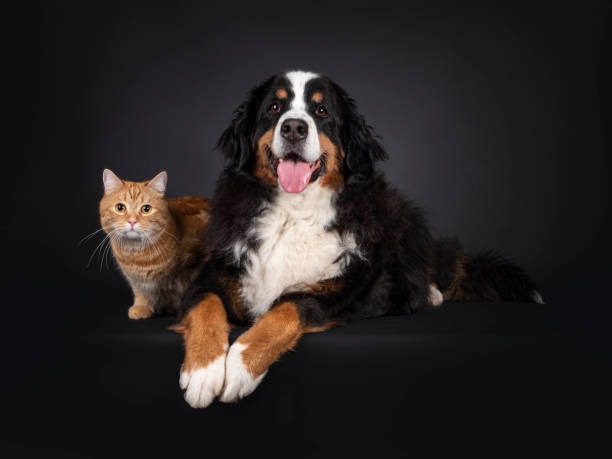As pet parents, we want the best for our furry companions. Like humans, pets need regular health care to ensure they live long, healthy, and happy lives. However, understanding what constitutes adequate pet health care can sometimes be challenging. This is where a pet wellness plan comes into play. A pet wellness plan is not just a concept; it’s a proactive approach toward ensuring your pet’s health and well-being are always a top priority. Let’s discover a pet wellness plan and why it’s essential for your fur baby.
What Is a Pet Wellness Plan?
A pet wellness plan is a predetermined package of veterinary care services designed to maintain your pet’s optimal health. It typically includes regular check-ups, vaccinations, parasite control, and lab tests. For pet owners looking for dog vaccinations in Echo Park, a wellness plan can ensure their furry friends stay updated with essential immunizations. Unlike pet insurance, which covers unforeseen illnesses and accidents, a wellness plan is meant for preventive care to help avoid potential health issues.
The Benefits of a Pet Wellness Plan
-
Preventive Care: Regular visits to the vet can catch health issues before they become serious, which can save not only your pet from discomfort but also you from hefty veterinary bills.
-
Cost Savings: Although these plans have an upfront cost, they can save you money in the long run by avoiding emergency medical costs through early detection and prevention.
-
Better Planning: Knowing that your pet’s healthcare needs are budgeted and scheduled can give you peace of mind and eliminate guesswork about when to take your pet for vet visits.
-
Longer Life Expectancy: With regular care and early detection of diseases, pets are more likely to live longer, healthier lives.
Pet wellness encompasses more than just regular vet visits; it’s about creating a lifestyle that supports your pet’s health and happiness. This includes nutritious food, proper exercise, mental stimulation, and socialization. For more information on maintaining your pet’s health and to explore different wellness plans, click here. Remember, a happy pet is a healthy pet.
Choosing the Right Wellness Plan
Selecting the appropriate wellness plan for your pet requires careful consideration. Here are a few tips to help you make an informed decision:
-
Evaluate Your Pet’s Needs: Consider your pet’s age, breed, and health status. Younger pets might need a plan that covers vaccinations, while older pets might need more frequent health screenings.
-
Research Thoroughly: Not all wellness plans are created equal. Ensure you research and compare plans from several providers, paying close attention to what’s included in each package.
-
Consider Your Budget: Wellness plans can be an investment in your pet’s health. Think about what you can realistically afford and remember that preventive care now can save on emergency expenses later.
-
Read the Fine Print: Before signing up for any plan, especially one concerning pet healthcare, make sure you understand what is covered, including procedures such as cat surgery and any restrictions or limitations that may apply.
Integrating Wellness into Daily Life
Adopting a wellness plan is the first step toward ensuring your pet’s health. Integrating wellness practices into your daily routine is what truly makes a difference. This includes:
-
Regular exercise tailored to your pet’s breed and size.
-
Providing a balanced diet and maintaining a healthy weight.
-
Keeping up with grooming and dental care.
-
Creating a stimulating environment with toys and activities to keep them mentally engaged.
When to Update Your Pet’s Wellness Plan
1. As Your Pet Ages
-
Entering Senior Years: As pets move into their senior years, their healthcare needs typically increase. Regular scans and specific senior pet health checks become vital.
-
Changes in Activity Level: A decreased activity level can indicate underlying health issues or the need for a diet adjustment.
-
Dental Health Concerns: Aging can affect a pet’s dental health, requiring more frequent dental checkups and care.
2. If Your Pet’s Health Status Changes
-
Diagnosis of Chronic Conditions: Diseases like diabetes, arthritis, or heart problems necessitate adjustments in their wellness plan to manage these conditions effectively.
-
After an Injury: Recovery from an injury might require physical therapy, surgeries, or a special diet, affecting the wellness plan.
-
Weight Changes: Significant weight gain or loss might reflect health issues, needing dietary adjustments and possibly more diagnostic tests.
3. Based on Veterinary Recommendations
-
Annual Check-Ups: Regular vet visits can lead to new recommendations based on a pet’s current health status and needs.
-
Vaccination Updates: As pets age or based on health conditions, their need for certain vaccinations or booster shots may change.
-
Preventive Care Adjustments: Preventive measures against parasites, dental issues, and dietary recommendations might need updates to align with the pet’s current health status and age.
4. Lifestyle Changes
-
Changes in the Pet’s Environment: Moving, adding new pets to the household, or significant changes in the family dynamic can affect a pet’s stress levels and overall health.
-
Alterations in Exercise or Activity: An increase or decrease in physical activity can lead to changes in a pet’s health, necessitating alterations in their wellness plan.
Final Thoughts
A pet wellness plan invests in your furry friend’s future health and happiness. By choosing the right plan and integrating wellness practices into your everyday life, you can ensure your pet enjoys a high quality of life and remains by your side for years to come. Remember, the best care for your pet starts with prevention and early detection. Now is the perfect time to take that step towards a healthier tomorrow for your fur baby.


